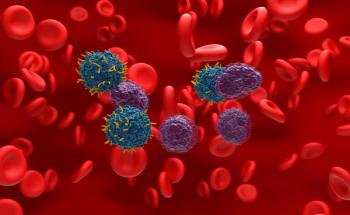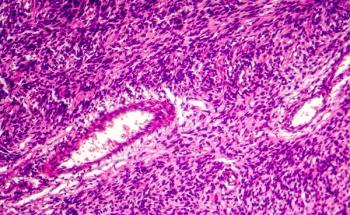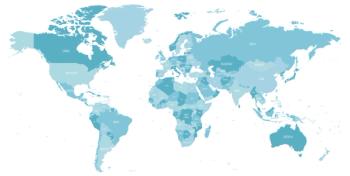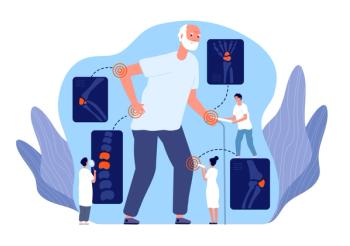
COVID-19 Associated With Autoimmune, Autoinflammatory Connective Tissue Disorders
Researchers highlighted the potential long-term consequences of COVID-19 on incident autoimmune and autoinflammatory connective tissue disorders in a recent study.
A substantial risk of autoimmune and autoinflammatory connective tissue disorders following COVID-19 suggests a long-term effect and need for management and evaluation for such disorders post infection.
“Our results emphasize the need to focus on managing not only the acute stages of COVID-19 itself but also autoimmune diseases as complications of COVID-19,” wrote the researchers of the study. “Although the risks of developing each disease following COVID-19 varied, there was a clear tendency toward increased risk overall, especially in those who experienced a severe case of COVID-19.”
The retrospective, population-based cohort study is published in
Autoimmune and autoinflammatory diseases are classified as
In this study, the researchers used nationwide data from the Korea Disease Control and Prevention Agency COVID-19 National Health Insurance Service cohort between October 8, 2020, and December 31, 2021. Individuals included in the study had received a diagnosis of COVID-19 via polymerase chain reaction testing, as well as a control group with no evidence of COVID-19 from the National Health Insurance Service of Korea cohort.
In addition to investigating the incidence and risk of autoimmune and autoinflammatory connective tissues disorders following COVID-19, the researchers examined a total of 32 covariates, including demographics, socioeconomic status, lifestyle factors, and comorbidity profiles through inverse probability weighing.
A total of 581,500 individuals received a COVID-19 diagnosis during the study period, in which 354,886 underwent a general health examination for further covariate control. A total of 9,875,232 individuals with no evidence of SARS-Co-V-2 infection were used for comparison. Data were extracted from those who had general health examination data and were alive by October 8, 2020 (n = 6,160,499).
The mean (SD) age of the COVID-19 group was 52.24 (15.55) years), with 179,041 (50.50%) females. The mean (SD) age of the control group was 52.05 (15.63) years, with 3,074,573 (50.12%) females. The mean (SD) follow-up times for the COVID-19 group were 119.70 (117.90) days and 121.40 (118.70) days in the control group, respectively.
The risks of autoimmune and autoinflammatory connective tissue disorders were higher in the COVID-19 group:
- Alopecia areata (adjusted hazard ratio [aHR], 1.12; 95% CI, 1.05-1.19)
- Alopecia totalis (aHR, 1.74; 95% CI, 1.39-2.17)
- Antineutrophil cytoplasmic antibody-associated vasculitis (aHR, 2.76; 95% CI, 1.64-4.65)
- Crohn disease (aHR, 1.68; 95% CI, 1.31-2.15)
- Sarcoidosis (aHR, 1.59; 95% CI, 1.00-2.52)
Furthermore, the risk of alopecia totalis, psoriasis, vitiligo, vasculitis, Crohn disease, ulcerative colitis, rheumatoid arthritis, adult-onset Still disease, Sjögren syndrome, ankylosing spondylitis, and sarcoidosis were associated with the severity of COVID-19.
However, the researchers acknowledged some limitations to the study, including a demographic that consisted of entirely of a single ethnicity and an age distribution mostly comprised of adults. Therefore, the results of this study are not generalizable to adolescents and children. Additionally, the data lacked detailed patient information regarding their genetic background and could not differentiate between individuals who were the most susceptible to autoimmune disease.
Despite these limitations, the researchers believe the study suggests how long-term management of patients with COVID-19 should include evaluations of subsequent development of autoimmune and autoinflammatory connective tissue disorders.
“This suggests the existence of a common pathway, which may involve excessive cytokine storm leading to prolonged autoimmune responses that trigger specific underlying pathophysiology of each disease,” wrote the researchers. “Taken together, surveillance for the new development of autoimmune and autoinflammatory diseases for the myriad of COVID-19 survivors globally is suggested.”
Reference
Lim SH, Ju HJ, Han JH, et al. Autoimmune and autoinflammatory connective tissue disorders following COVID-19. JAMA Network Open. 2023;6(10). doi:10.1001/jamanetworkopen.2023.36120
Newsletter
Stay ahead of policy, cost, and value—subscribe to AJMC for expert insights at the intersection of clinical care and health economics.














































